In the world of consumer brands, storytelling and content marketing are fine arts. Whether it’s Nike championing inner strength or John Lewis tugging at heartstrings every Christmas, the best B2C brands have long known how to tell stories that spark emotion and build lasting connections.
Meanwhile, much of B2B content still struggles to rise above product specs, gated whitepapers, and SEO-first blog posts. Even as decision-makers demand more value and personality from content, many B2B brands continue to prioritise format over feeling.
But the lines between B2B and B2C are blurring. Business buyers are still people – and they increasingly expect the same clarity, authenticity and emotional resonance they experience as consumers. It’s time B2B content marketing experts took a closer look at what makes B2C storytelling work – and borrowed what’s useful.
Leading with emotion, not features
B2B marketers often default to logic. We talk about ROI, integrations, compliance, and cost savings. While those things matter, they rarely compel.
B2C storytelling starts with the human problem, not the product. It taps into hope, fear, aspiration or pride – often using characters or scenarios the audience can instantly relate to. The goal is to make the viewer feel something.
This doesn’t mean B2B needs to become sentimental. But it does mean elevating messaging from what we do to why it matters. Stripe doesn’t just enable digital payments – it talks about powering the next generation of entrepreneurship. Slack isn’t just a communication platform – it’s where teams do their best work. Those are emotional narratives built for business buyers.
Using narrative arcs to create momentum
Most B2B content is built around structure, not story. We outline problems, present solutions, and call for action – but without narrative tension, there’s little reason to stay engaged.
B2C brands understand the power of a classic story arc. Even in a 60-second ad, there’s a beginning, a challenge, a turning point, and a resolution. There’s movement – and more importantly, stakes.
In long-form B2B content, this means crafting more than just information. A great case study, for example, doesn’t just list outcomes – it should tell the story of a challenge overcome. Who was the hero? What stood in their way? How did your product help them succeed?
Add tension. Build drama. Let the reader root for someone.
Building characters buyers care about
People connect with people. Yet much of B2B content still hides behind logos, stock photography and anonymous expertise.
B2C excels at character. Whether it’s Compare the Market’s meerkats or Dove’s real women, audiences are drawn to identifiable voices and faces. That principle translates just as powerfully to B2B.
The rise of founder brands, employee-led content, and subject-matter-expert videos reflects this shift. Brands like Gong, Lavender, and Chili Piper have built huge followings not through polished campaigns but through real humans sharing valuable insight in a consistent, relatable tone.
Showcase your people. Let them speak in their own voice. Build up your internal characters just as carefully as your brand persona.
Tapping into cultural and emotional timing
B2C storytelling is rarely created in a vacuum. It reacts to – and often shapes – the cultural moments around it.
Whether it’s Airbnb standing for inclusion during refugee crises or Guinness celebrating resilience during lockdowns, great B2C content meets the moment in a way that feels real and relevant.
In B2B, this might mean aligning campaigns with industry disruptions, legislative change, or broader work-life trends. For example, during the rise of remote work, tools like Notion and Zoom created educational and emotional content that addressed both the practical and personal challenges of distributed teams.
The lesson: context matters. Timing matters. Don’t just create evergreen content. Create relevant content.
Getting creative with formats
B2C storytelling doesn’t limit itself to blogs or banner ads. It uses video, interactive tools, OOH campaigns, user-generated content, short-form social and more to meet audiences where they are.
B2B is finally catching up. The best-performing B2B content in 2025 includes things like:
-
Bite-sized thought leadership on LinkedIn
-
Long-form essays repackaged as newsletter mini-series
-
Interactive ROI calculators and demos
-
Founder podcasts and behind-the-scenes brand storytelling
It’s not about using every channel – it’s about choosing formats that serve the story. Not every message belongs in a PDF.
Thinking long-term, not just funnel-first
Too much B2B content is built around immediate pipeline. It’s designed to capture leads, convert MQLs and drive short-term sales conversations.
But B2C storytelling plays a longer game. The John Lewis Christmas ad doesn’t sell sofas – it sells brand affinity. Nike campaigns don’t push products – they deepen belief in a lifestyle.
B2B brands that embrace long-term storytelling benefit in similar ways. Take Adobe’s CMO.com or Salesforce’s State of Sales series. These aren’t lead gen assets – they’re thought leadership platforms that build trust and recall over time.
You can’t nurture what doesn’t convert in the first place. Storytelling builds the brand authority that makes buyers come back when they’re ready.
Measuring more than clicks
In B2B, the pressure to justify spend often leads to simplistic content metrics – traffic, downloads, form fills. But these are proxies, not proof of resonance.
B2C brands measure storytelling impact through brand lift, share of voice, engagement time, sentiment, and direct social responses. They care how people feel, not just what they do.
B2B marketers should aim to track:
-
Message recall
-
Content-led sales conversations
-
Branded search lift
-
Share of voice on social
Ask: does your content leave a lasting impression, or just a passing click?
B2B storytelling isn’t about being soft
There’s a misconception that emotion means fluff – that storytelling belongs to consumer brands while B2B must stay hard-edged and serious.
But storytelling doesn’t mean abandoning rigour. It means packaging insight, expertise, and data into narratives that stick. It’s about making buyers feel the value before they see the spreadsheet.
As Forrester’s 2024 report on B2B buying behaviour found, buyers are now more emotionally driven than ever – they’re looking for vendors they trust, respect, and remember.
So borrow from B2C. Learn from its craft. But don’t imitate. Translate.
Want the latest B2B marketing news straight to your inbox? Subscribe to our free weekly newsletter!
Interested in sales, marketing or business skills courses and training? Check out our training partner, Learning Room.


 Whether you want to learn how to use LinkedIn, X or Facebook for marketing, or need to brush up on business skills like leadership, presentation skills or managing meetings, you will find something to enhance your professional skills with these on-demand courses.
Whether you want to learn how to use LinkedIn, X or Facebook for marketing, or need to brush up on business skills like leadership, presentation skills or managing meetings, you will find something to enhance your professional skills with these on-demand courses.